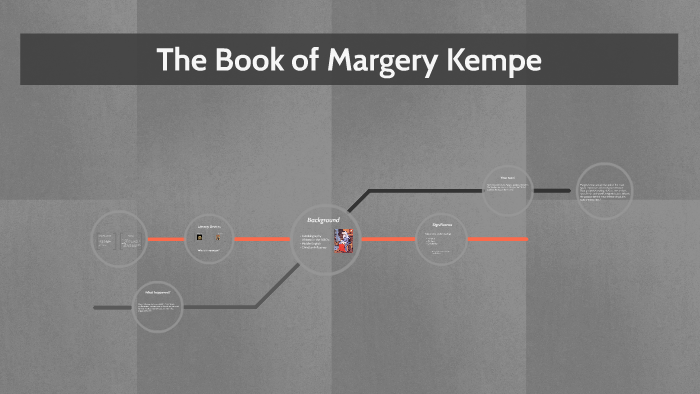
In New directions in medieval manuscript studies and reading practices: Essays in honour of Derek Pearsall, ed. Handling ‘The book of Margery Kempe’: The corrective touches of the red ink annotator.

Ann Arbor: University of Michigan Press.īugyis, Katie Ann-Marie. Intimate reading: Textual encounters in medieval women’s visions and vitae. Richard Salthouse of Norwich and the scribe of The book of Margery Kempe. The Chaucer Review 55: 171–196.īale, Anthony. The problematic pilgrim: Rethinking Margery’s pilgrim identity in ‘The book of Margery Kempe’. In A companion to the book of Margery Kempe, ed. Margery’s trials: Heresy, Lollardy and dissent. ‘Understanding by Feeling’ in Margery Kempe’s Book. Keywordsīritish Library Digitised Manuscripts. Scholarship on The Book of Margery Kempe has examined a range of subjects, including autobiography, hagiography, pilgrimage, gender, feminism, visions, the body, affect, and dissent. There is now common critical practice to distinguish between “Margery” – the character as portrayed in the Book – and “Kempe” – the real woman and source of the text. Recent criticism – especially in the wake of feminist scholarship of the 1980s–2000s – points to the importance and complexity of the Book as a literary text. Since then, it has attained canonical status. The Book of Margery Kempe was essentially unknown from the sixteenth century until the remarkable rediscovery of the sole manuscript in the 1930s.

Unlike an anchoress or a nun, Margery is thoroughly rooted in the world, and the Book details the extreme hardships that come from following a spiritual life while still being a medieval laywoman. She becomes a visionary prophet who shares an intimate relationship with Christ she travels extensively across England and much further-afield on pilgrimage to the Holy Land, Rome, and Santiago de Compostela she imaginatively reenacts and participates in scenes from Christ’s life. It details Margery’s life as a well-to-do wife, mother, and businesswoman who is dramatically called to a spiritual vocation. The Book of Margery Kempe (written around 1436–1438) tells the eventful life story of a fifteenth-century woman from Bishop’s Lynn (now King’s Lynn) in Norfolk.


 0 kommentar(er)
0 kommentar(er)
